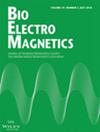下载PDF
{"title":"Evaluation of Exposure Assessment Methods and Procedures for Induction Hobs","authors":"Jingtian Xi, Sven Kühn, Cosimo Fortunato, Erdem Ofli, Niels Kuster","doi":"10.1002/bem.70024","DOIUrl":null,"url":null,"abstract":"<p>Induction hobs generate strong alternating magnetic fields to heat pots by inducing eddy currents. These fields are the strongest close to the bottom of the cookware, but stray fields at large distances can still be substantial. In general, these are higher than the reference levels defined by international electromagnetic exposure safety guidelines (ICNIRP 1998; ICNIRP 2010; IEEE 2019). That the reference levels are exceeded does not imply that the basic restrictions are also violated. In this study, we assess the exposures caused by the latest generation of induction hobs by applying the advanced instrumentation and different methods that include the procedures developed by the International Electrotechnical Commission (IEC) for household appliances (IEC 62233) (IEC International Electrotechnical Commission 2005), the 4-tier approach developed for inductive wireless power transfer systems (IEC 63184) (IEC International Electrotechnical Commission 2021), and their derivatives. First, methods for determining the maximum exposure configuration were assessed. Then, the 3D distribution of the incident magnetic field was sampled with a scanning system and analyzed, and the contact currents assessed. Lastly, numerical dosimetric evaluations were performed in anatomical models to determine the maximum fields induced by the measured incident fields directly or by a representative coil model converted from the measured fields. The study's findings reveal significant variations in exposure across different induction hobs, with differences of up to a factor of <span></span><math>\n <semantics>\n <mrow>\n <mo>></mo>\n </mrow>\n <annotation> $\\gt $</annotation>\n </semantics></math> 20 (<span></span><math>\n <semantics>\n <mrow>\n <mo>></mo>\n </mrow>\n <annotation> $\\gt $</annotation>\n </semantics></math> 26 dB) as a function of power, coil size, and proximity to the coil. This suggests that low-exposure hobs can be designed without compromising cooking performance. Furthermore, the study strengthens the conclusions of previous studies that IEC 62233 (IEC International Electrotechnical Commission 2005) may underestimate the exposure for persons standing next to the hob by up to a factor of <span></span><math>\n <semantics>\n <mrow>\n <mo>></mo>\n </mrow>\n <annotation> $\\gt $</annotation>\n </semantics></math> 30—based on testing according to the exposure limits from (ICNIRP 1998; IEEE 2019)—and thus does not ensure safety. A dosimetric analysis, the most accurate method, would be relatively costly. Alternative approaches derived from (IEC International Electrotechnical Commission, 2021) that are affordable and not overly conservative are discussed. Bioelectromagnetics. 00:00–00, 2025. © 2025 Bioelectromagnetics Society.</p>","PeriodicalId":8956,"journal":{"name":"Bioelectromagnetics","volume":"46 7","pages":""},"PeriodicalIF":1.2000,"publicationDate":"2025-09-29","publicationTypes":"Journal Article","fieldsOfStudy":null,"isOpenAccess":false,"openAccessPdf":"https://onlinelibrary.wiley.com/doi/epdf/10.1002/bem.70024","citationCount":"0","resultStr":null,"platform":"Semanticscholar","paperid":null,"PeriodicalName":"Bioelectromagnetics","FirstCategoryId":"99","ListUrlMain":"https://onlinelibrary.wiley.com/doi/10.1002/bem.70024","RegionNum":3,"RegionCategory":"生物学","ArticlePicture":[],"TitleCN":null,"AbstractTextCN":null,"PMCID":null,"EPubDate":"","PubModel":"","JCR":"Q3","JCRName":"BIOLOGY","Score":null,"Total":0}
引用次数: 0
引用
批量引用
Abstract
Induction hobs generate strong alternating magnetic fields to heat pots by inducing eddy currents. These fields are the strongest close to the bottom of the cookware, but stray fields at large distances can still be substantial. In general, these are higher than the reference levels defined by international electromagnetic exposure safety guidelines (ICNIRP 1998; ICNIRP 2010; IEEE 2019). That the reference levels are exceeded does not imply that the basic restrictions are also violated. In this study, we assess the exposures caused by the latest generation of induction hobs by applying the advanced instrumentation and different methods that include the procedures developed by the International Electrotechnical Commission (IEC) for household appliances (IEC 62233) (IEC International Electrotechnical Commission 2005), the 4-tier approach developed for inductive wireless power transfer systems (IEC 63184) (IEC International Electrotechnical Commission 2021), and their derivatives. First, methods for determining the maximum exposure configuration were assessed. Then, the 3D distribution of the incident magnetic field was sampled with a scanning system and analyzed, and the contact currents assessed. Lastly, numerical dosimetric evaluations were performed in anatomical models to determine the maximum fields induced by the measured incident fields directly or by a representative coil model converted from the measured fields. The study's findings reveal significant variations in exposure across different induction hobs, with differences of up to a factor of
>
$\gt $
20 (
>
$\gt $
26 dB) as a function of power, coil size, and proximity to the coil. This suggests that low-exposure hobs can be designed without compromising cooking performance. Furthermore, the study strengthens the conclusions of previous studies that IEC 62233 (IEC International Electrotechnical Commission 2005) may underestimate the exposure for persons standing next to the hob by up to a factor of
>
$\gt $
30—based on testing according to the exposure limits from (ICNIRP 1998; IEEE 2019)—and thus does not ensure safety. A dosimetric analysis, the most accurate method, would be relatively costly. Alternative approaches derived from (IEC International Electrotechnical Commission, 2021) that are affordable and not overly conservative are discussed. Bioelectromagnetics. 00:00–00, 2025. © 2025 Bioelectromagnetics Society.
感应滚刀的暴露评估方法和程序的评价
感应滚刀通过感应涡流产生强大的交变磁场来加热锅。这些磁场在靠近炊具底部的地方最强,但远距离的杂散磁场仍然很大。一般来说,这些高于国际电磁暴露安全指南(ICNIRP 1998; ICNIRP 2010; IEEE 2019)定义的参考水平。超过了参考水平并不意味着也违反了基本限制。在本研究中,我们通过应用先进的仪器和不同的方法来评估最新一代感应滚刀造成的暴露,这些方法包括国际电工委员会(IEC)为家用电器(IEC 62233) (IEC国际电工委员会2005)制定的程序,为感应无线电力传输系统开发的四层方法(IEC 63184) (IEC国际电工委员会2021),以及它们的导数。首先,评估了确定最大暴露配置的方法。然后,利用扫描系统对入射磁场的三维分布进行采样和分析,并评估接触电流。最后,在解剖模型中进行了数值剂量学评估,以确定直接测量的入射场或由测量场转换的代表性线圈模型引起的最大场。该研究的发现揭示了不同的感应滚刀暴露的显著差异,差异高达>; $\gt $ 20 (> $\gt $ 26 dB),这是功率、线圈尺寸和与线圈的接近程度的函数。这表明,低暴露的炉具可以在不影响烹饪性能的情况下设计。此外,该研究加强了先前研究的结论,即IEC 62233 (IEC国际电工委员会2005年)可能低估了站在滚刀旁边的人的暴露,根据(ICNIRP 1998; IEEE 2019)的暴露限值进行测试,最高可达30倍-因此不能确保安全。剂量学分析是最准确的方法,但成本相对较高。本文讨论了来自(IEC国际电工委员会,2021)的可负担且不过于保守的替代方法。生物电磁学。00:00 - 00,2025。©2025生物电磁学学会。
本文章由计算机程序翻译,如有差异,请以英文原文为准。


 求助内容:
求助内容: 应助结果提醒方式:
应助结果提醒方式:


